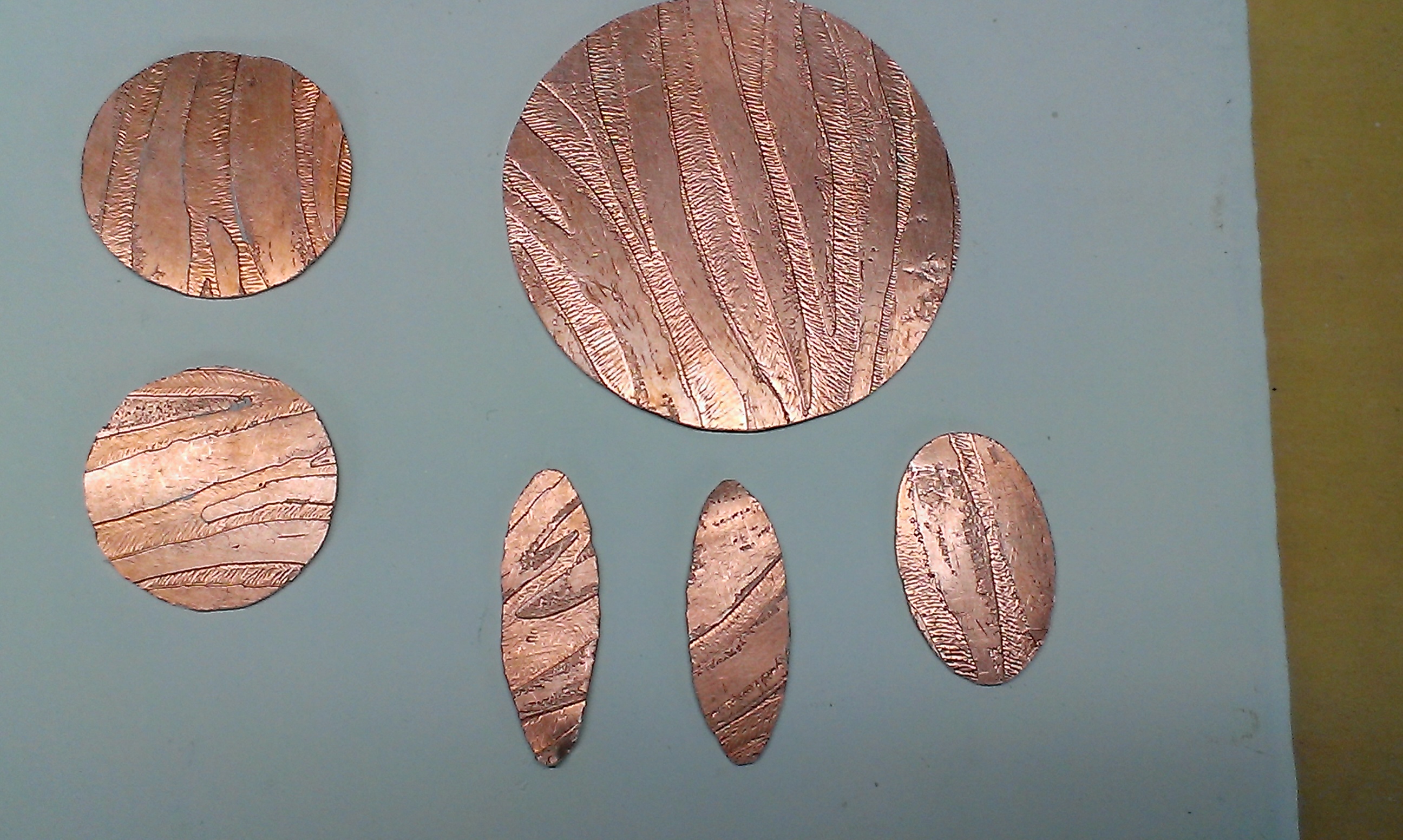
Creating Etched Metal Jewelry
I’m always looking for new techniques to learn to incorporate into my beaded jewelry and fused glass creations. I’ve admired etched metal pieces made by other artists but thought it was too difficult to learn. I thought you either had to buy expensive etched metal blanks from a jewelry material supplier like Rio Grande, or take a class.
But I made a happy discovery after doing a bit of research online. I learned that the average crafter can make their own etched metal pieces using a few simple supplies. The resulting etched metal pieces can then be used to make a variety of earrings, pendants and brooches using basic metalworking techniques.
Etched Metal Jewelry Supplies
Note, this tutorial discusses the basic steps to make etched designs in base metal (I used copper and brass) using a chemical etching solution. This technique will not work on precious metals such as gold, sterling silver or fine silver.
- Base metal sheet – copper, brass or nickel silver
- Styrofoam block
- Painters tape
- Plastic container
- Metal etching solution
- Sharpie marker
- Ink pad
- Rubber stamps
- Baking soda
- Steel wool
- Penny brite
- Jewelers saw
- Saw blade
- Beeswax
The etching solution is commonly used to etch circuit boards so you could try any store that sells DIY electronic supplies – Home Depot might even have it. I purchased my initial supply of etching solution from Radio Shack. Since then all my local Radio Shacks have closed so I need to find a new source.
The etching solution is marked as a hazardous material and incurs additional shipping charges if you’re trying to buy it online. So, I highly recommend you find a local supplier to avoid having to deal with shipping hazardous materials to your home or business.
Basic Etched Metal Jewelry Tutorial
Instead of writing pages of how-to steps, I have included a picture gallery (see below) of the steps involved. Click on any of the photos to view larger images.
Basically, you use either a permanent marker (hello Sharpie) or ink stamp and ink to mark the pattern on your metal. Then you tape the the marked metal blank onto a block of styrofoam. Place the block, image side down, into a bowl filled with etching solution. Let the metal blank sit in the solution until you reach your desired depth of etching.
Carefully remove the styrofoam block from the etching solution. Remove the tape then clean the surface of the metal using a thick paste made out of baking soda and little bit of water. Gently scrub the surface with fine steel wool or one of those cellulose dish scrubbers to remove all traces of the baking soda and metal etching solution. I use the utility sink in my laundry room to contain the mess – I don’t recommend doing this in your kitchen sink.
Dry off your etched metal blank then decide how you are going to use it. I marked the back side of my copper with a Sharpie marker and then used a jewelers saw to cut out shapes that I later made into pendants and earrings. You can add a patina to the etched metal if desired – like when you patina silver jewelry – to bring out attention to details in the etched pattern. Use Penny Brite or beeswax to seal the surface of your etched copper jewelry pieces.
I had some brass metal pieces – bracelet cuffs and choker blanks – that also worked well using this metal etching technique. See the beaded pendant at the top of this post – it shows an etched metal brass choker blank I bought from a jewelry supply store.
Important Metal Etching Safety Tips
Please work in a well ventilated space and always wear gloves (latex or nitrile) to protect your hands when etching metals. I also suggest wearing safety glasses when working with any kind of dangerous and/or hazardous items. The baking soda is used to neutralize the etching solution should you spill or splash it on anything.
When etching metal, place the etching solution in a non-reactive bowl or you could end up etching the bowl! I used an old plastic bowl. The etching solution is very thin, water-like, and can simply be poured back in the original container once you’ve completed a project. Never pour the etching solution down the drain – use baking soda to neutralize any old solution that you aren’t going to reuse in future etching projects – then dispose of as a hazardous waste.
Take care,
Lynn Smythe of The Creative Cottage
© 2018, The Creative Cottage. All rights reserved. Unauthorized use and/or duplication of this material without express and written permission from this blog’s author and/or owner is strictly prohibited.


















